2013 MV Agusta F4 RR Review: Street Ride - Motorcycle.com
News of scheduling gremlins sabotaging our plans for piloting MV Agusta’s flagship superbike around one of our favorite West Coast racetracks was, to say the least, dispiriting. Adorned with the latest go-fast, electronic trickery and boasting a claimed 201 crank horsepower, riding this two-wheel missile on the street is analogous to releasing a tiger shark in a koi pond.
Sadly, our time with MV’s flagship superbike was so brief that we were unable to schedule a track outing, so we’ll have to rely on our Euro correspondent, Tor Sagen, who attended the F4 and F4 RR press intro a few months ago at Spain’s Ricardo Tormo circuit. But our street impressions here will help provide a better understanding of what to expect after investing $25 large into a motorcycle this seductive, exotic and extravagant.
With the power to outrun damn near everything except a CHP radio we rode away from civilization and into a little slice of remote SoCal switchback heaven. Once there the F4 double-R straightened corners with formidable competence, and its ability to devour straightaways had us praying to Brembo, the god of deceleration, on a few occasions.
COMPARE: Read our review of the 2012 MV Agusta F4 RR Corsacorta
To say the RR’s engine spins up quickly and accelerates hard is an understatement of epic proportions. Our seat-of-the-pants measuring apparatus tells us that MV has concocted a motor possibly faster than BMW’s king of production bike horsepower, the S1000RR.
“I’ve been known to say that an engine, no matter how admirable, couldn’t be made better with 10% more power,” Editor-in-Chief Kevin Duke relates. “But the F4 RR is so animalistically fast that it’s difficult to imagine being able to use more power!”
Aggressively riding this bike on the street has you entering corners in such rapid succession the experience is mostly a measure of your braking skills and the courage you have applying them. Helping your cause are the lightweight Brembo M50 monobloc calipers introduced last year on Ducati’s Panigale.
To the uninitiated the electronics package may appear overwhelming, but once familiarized an F4 owner will come to appreciate its functionality.
MV tossed the Magnetti Marelli electronics system from the 2012 F4 and replaced it with a new suite of controls operated by an Eldor system. MV’s Motor & Vehicle Integrated Control System (MVICS) provides individual settings for traction control, the electronic steering damper and quick shifter, as well as pre-set ride modes including Sport, Normal and Rain.
| MV Agusta Electronics | |
| Motor & Vehicle Integrated Control System (MVICS) | Settings |
| Ride Modes | Custom, Normal, Rain, Sport |
| Öhlins Electronic Suspension | Compression & Rebound 1-20 (manual preload) |
| Traction Control | 1-8, Off |
| Electronic Steering Damper | Auto, Manual |
| Quick Shifter | Off, On |
| Engine Braking | Normal, Rain, Sport |
| Max Torque | Normal, Rain, Sport |
| Throttle Sensitivity | Normal, Rain, Sport |
| Engine Response | Normal, Rain, Sport |
| RPM Limiter | Normal, Rain, Sport |
However, it’s the Custom function of the MVICS that’s especially intriguing. Within this mode a rider can select personal preferences of engine braking, throttle sensitivity, engine response, torque and a speed limiter.
COMPETITION: Read our review of the 2013 BMW S1000RR HP4
So, when we found the Sport setting too sensitive for slow maneuvers within urban confines, we dialed up the Normal setting that retards low-end engine performance to a point where a maxi-scooter would smoke the RR to the next stop light. Setting the throttle sensitivity to Normal and engine response to Sport helps the ECU ignore minor throttle inconsistencies while still delivering total engine performance.
The Eldor electronics also govern the traction-control system, adjustable to eight levels. It uses rate-of-change sensors to indicate when grip is being overwhelmed by power, augmented by bank-angle and wheel-speed sensors.
The Öhlins electronic fork and shock removes the screwdriver from the equation except when adjusting preload – that’s still manual.
In addition to the customization options available electronically, MV has enabled physical adjustability on the F4 RR – footpegs, hand levers and foot pedals can be fine-tuned to your preferences. While we appreciate the effort of implementing extra-cost items such as these, they can’t overcome the F4’s minus-2 rating on the chiropractic scale of motorcycle comfort. The silver lining; my wife preferred riding pillion on the F4 compared to the Panigale’s passenger accommodations.
When a long-enough straightaway presented itself we held the double-R’s throttle to the stop and up-snicked a couple gears with MV’s new quick-shifter that allows full-throttle, clutchless upshifts. Other than a forward-thrusting rush of power there was no mechanical indication an upshift took place – yeah, it’s that smooth.
And just around the corner is a first in motorcycling: a quick-downshift feature that will automatically blip the throttle when selecting a lower gear, negating the need for rev-matching and using the clutch during downshifts. This program wasn’t loaded in our test bike’s electronics, but we’re told it will be available as a free download within the next month or so after the factory optimizes its algorithm.
| Highs: | Lows: | |
| Hell-for-strong engine Less expensive than Panigale R Unique among Euro exotics | Can only save one Custom rider mode setting No TFT full-color display No semi-active suspension |
Try as we might, we were unable to unearth the F4 RR’s curb weight, so we’re left to refer to the company’s claimed dry weight of 419 pounds. That’s just 2 pounds less than the standard F4, which doesn’t enjoy the RR’s lighter, forged-aluminum wheels (“the lightest aluminum wheels available today”) and titanium (rather than steel) connecting rods. Surprisingly, the RR’s front fender is plastic, not the carbon fiber moto jewelry usually seen on high-end Italian sportbikes. The F4 retains its under-seat organ-style exhaust pipes.
The fuel tank holds a claimed 4.5 gallons, but on our day of fast riding and photo shoot passes the low fuel indicator illuminated at 90 miles. Our MPG calculation showed 30 miles per gallon, meaning the low fuel light came on 45 miles before running out of fuel or the capacity of the fuel tank is smaller than MV’s claiming.
VIEW: Read our 2012 European Literbike Shootout
Regardless, this exotic superbike, like its siblings, the F4 and F4 R, as well as its rivals, the Panigale and BMW HP4, aren’t purchased for their fuel economy figures or comfortable ergonomics. MV Agusta’s F4 RR is the pinnacle of Italian motorcycle art and looks good cutting quick lap times on the track as well as unraveling a ribbony back road.
But those activities are generally anonymous. Ride this bike to your local motorcycle hangout and bask in the name recognition. You might as well, you paid for the privilege.
Perhaps the biggest competitor to the RR is the base F4. Although it doesn’t have the bragging rights of forged wheels, variable-length intake tracts or titanium connecting rods, it looks nearly identical to the RR for $7500 less cash. At an MSRP of a relatively paltry $17,495, it’s already sold out at the dealer level.
| MV Agusta F4 RR Specifications | |
| Engine Type | Inline 4-cylinder |
| Engine Capacity | 998 cc |
| Bore x Stroke | 79 mm X 50.9 mm |
| Compression | 13.4:1 |
| Fuel System | EFI |
| Horsepower (Claimed) | 201 bhp @ 13,600 rpm |
| Torque (Claimed) | 81.9 ft-lb @ 9600 rpm |
| Transmission | Cassette style, six-speed, constant mesh |
| Clutch | Wet, multi-disc with back torque limiting device |
| Final Drive | Chain |
| Frame | Chromoly steel tubular trellis |
| Front Suspension | Öhlins EX NIX hydraulic, inverted 43mm fork with TiN treatment. Full electronic adjustability |
| Rear Suspension | Öhlins TTX shock with full electronic adjustability |
| Front Brakes | Brembo M50, 4-piston calipers, 320mm discs, Brembo radial pump assembly |
| Rear Brakes | Nissin 4-piston caliper, 210mm disc |
| Front Tire | 120/70-17 |
| Rear Tire | 200/55-17 |
| Seat Height | 32.7” |
| Wheelbase | 56.3” |
| Fuel Capacity | 4.5 gal |
| Colors | Pearl White/Black, Red/White |
| MSRP | $24,998 |
More by Tom Roderick



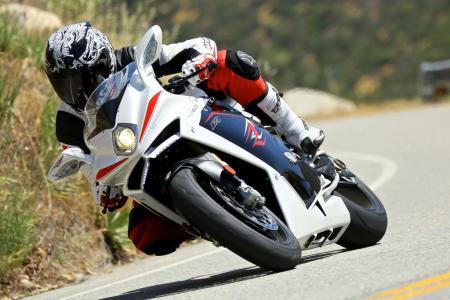






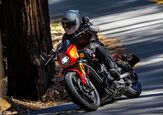
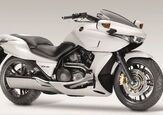
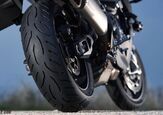
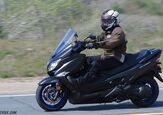
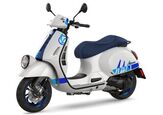

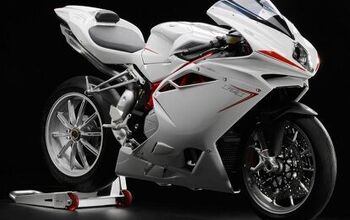
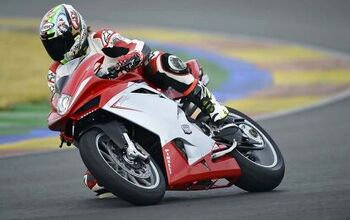
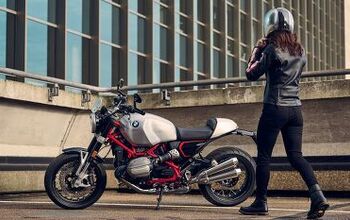
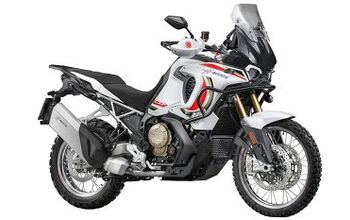
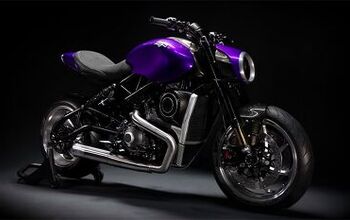
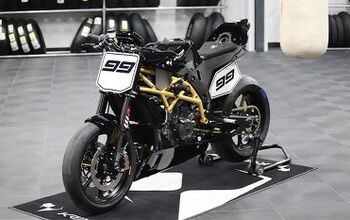


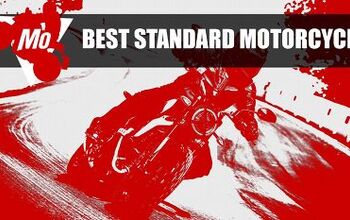
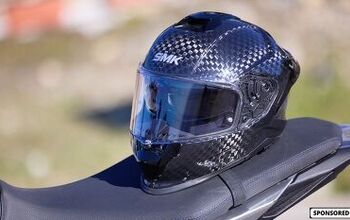
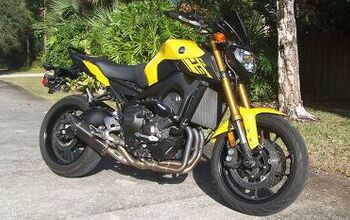
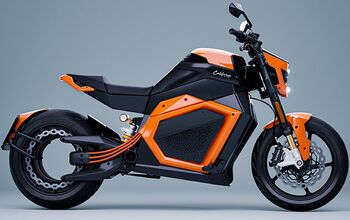
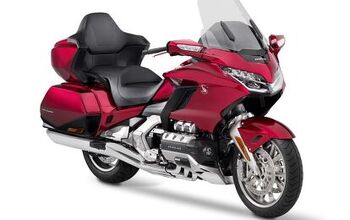

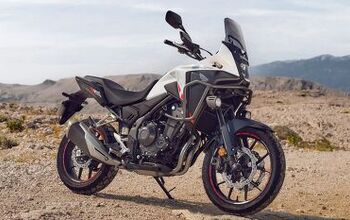
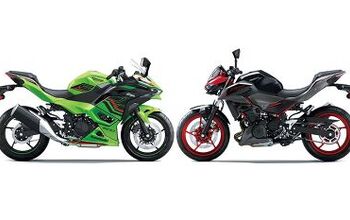

Comments
Join the conversation